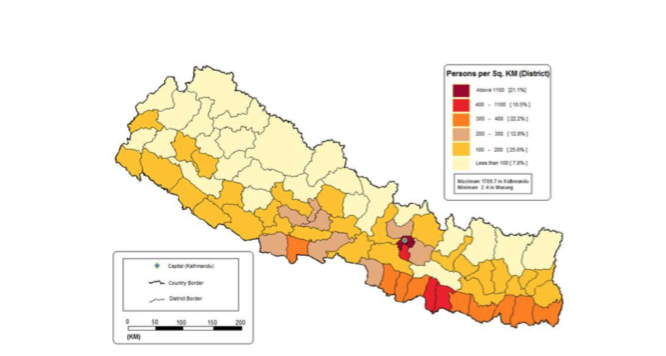People & REligion
Nepal in a Nutshell
According to the 2011 census Nepal’s population grew from 9 billion people in 1950 to 26.5 billion. From 2001 to 2011 the average family size declined from 5.44 to 4.9. The annual population growth rate is 1.35%. The citizens of Nepal are known as Nepali or Nepalese. The country is home to people of many different national origins. Nepal is a multi-ethic, multi-cultural and multi-lingual country. At the census 2011 over 100 different ethnic groups and casts were counted as well as well as 124 different languages and dialects.
Population Structure
| Data | Size |
|---|---|
| Population | 26,494,504 (2011) |
| Growth Rate | 1,35% |
| Population below 14 years | 34,19% |
| Population of age 15 to 59 | 54,15% |
| Population above 60 | 8,13% |
| Median Age (Average) | 20,07 |
| Ratio (Male:Female) | 100:94,16 |
| Life expectancy (Average) | 66,16 |
| Life expectancy (Female) | 67,44 |
| Life expectancy (Male) | 64,94 |

Ethnography
The ethnic mosaic in Nepal mainly consists of indo-aryan and tibeto-burman tribes. Many of the nationalities are remedies of the refugees which once hid and escaped to Nepal. The origin of some nationalities is not clear or controversial, for example the ones of the Newar and Tharu.
The seven biggest nationalities in Nepal are Chhetri (16,6%), Hill-Bahun (12,2%), Magar (7,1%), Tharu (6,6%), Tamang (5,8%), Newar (5,0%) and Kami (4,8%).Apart from that the nationalities of the Gurung, Sherpa, Limbu and Rai should be mentioned.
According to the census 2011, 44,6% of the population are speaking Nepali as their mother tongue. Other important languages are Maithili (11,7%), Bhojpuri (6,0%), Tharu (5,8%), Tamang (5,1%), Newar (3,2%) and Bajjika (3,0%).

Religion
The overwhelming majority of the Nepalese people follows Hinduism (81,34%). Shiva is regarded as the guardian deity of the country. Nepal was the only country with Hinduism as their state religion, until the state was declared as being a secularised state in April 2006.
The second biggest religion with 9,04% of the population is Buddhism. Lumbini as the birthplace of Siddharta Gautama, better known as Gautam Buddha, located in the Kapilavastu district, is a Buddhist pilgrimage site and an UNESCO World Heritage site. The holy site of Lumbini is bordered by a large monastic zone, in which only monasteries can be built. Buddhism is also the dominant religion in the sparsely populated northern regions, which are mostly inhabited by Tibetan-related people, such as the Sherpa.
Differences between Hindus and Buddhists have been minimal in Nepal due to the cultural and historical intermingle of Hinduist and Buddhist beliefs. Moreover, traditionally Buddhism and Hinduism were never two distinct religions in the western sense of the word. In Nepal, the faiths share common temples and worship common deities. Most of the festivals in Nepal are Hindu.
Islamism is one of the bigger religious minorities with 4,39% believers, as well as Kirant Mundhum, an animist religion with 3,05%. Christianity, Jainism and others are further minorities.
Besides that, many Nepalese also believe in deities and spirits, with no origin from Buddhism or Hinduism, but with a relation to natural occurrences like trees, stones, birds, snakes, mountains, fire, soil and most of all water.
Nepalese Caste System
It was developed parallel to the Indian Cast System. The Nepalese Cast System changed with time and is still in the process of changing.

As in other countries where the Caste system is still encouraged in the population the untouchables or unclean caste is an important pillar of the whole civilization. This can be easily seen as the group of the Kami, Damai and Sarki, the biggest group of the untouchables makes alone up to 7% of the population. Although the system is changing and the borders between the castes are getting more transparent it is still one of the major reasons for the stasis of development of some ethnic groups. Education and a secularised government are the major contributors for a change in the right direction. In praxis, the cast is also very dependent on the financial state of the person. Poor people are more likely to be put in the caste of the untouchables or uncleans, whereas rich people are mostly put in the higher castes. Which also leads to the fact, that European or international tourists, which should be, according to the belief, due to there non-Hindu faith put in the group of the untouchables are enumerated to the ones in the higher castes except in actions with strong ritual meaning. Included are especially all actions containing water or the preparation of rice.

